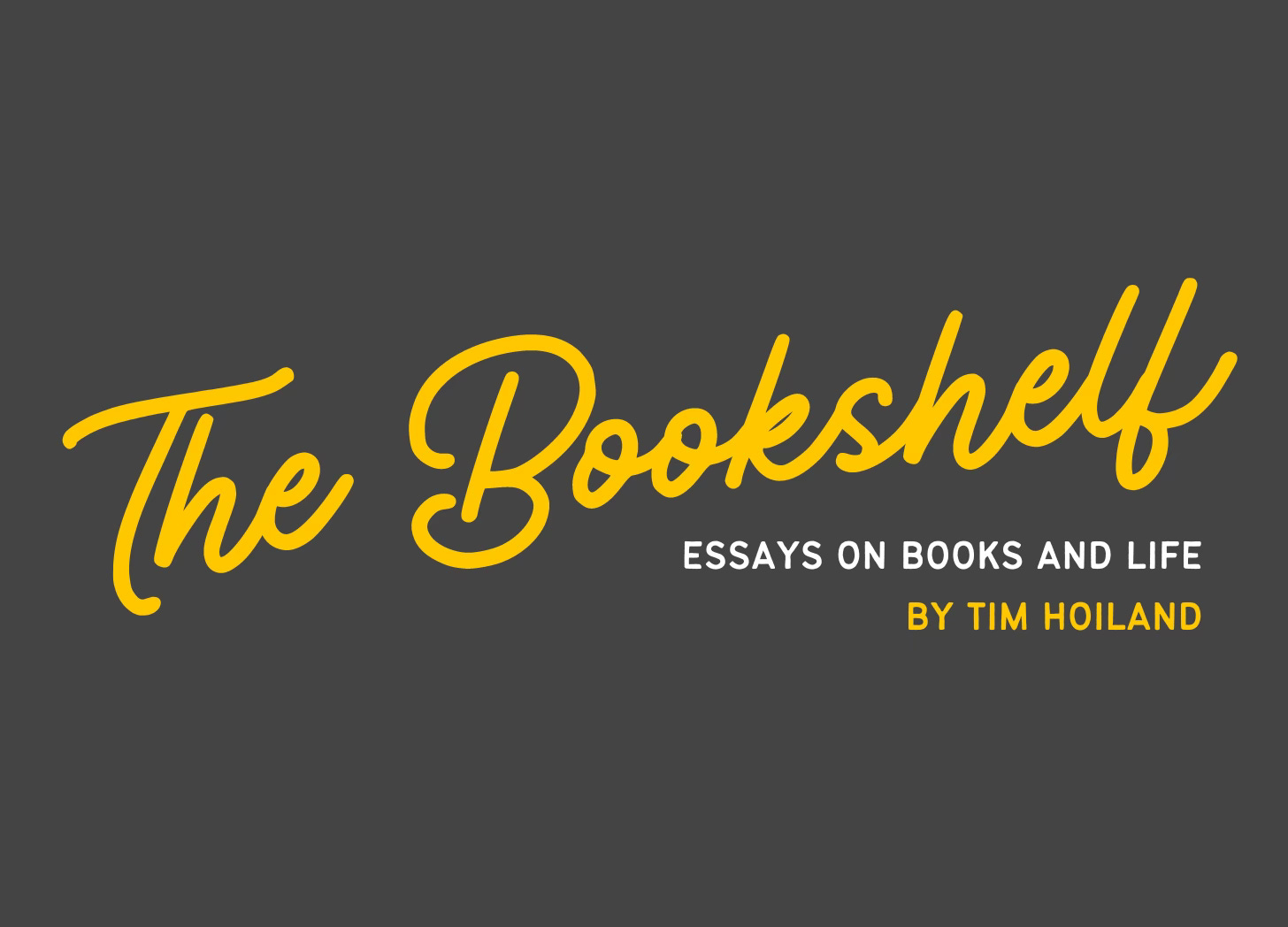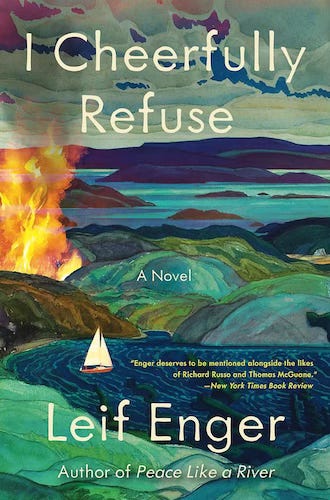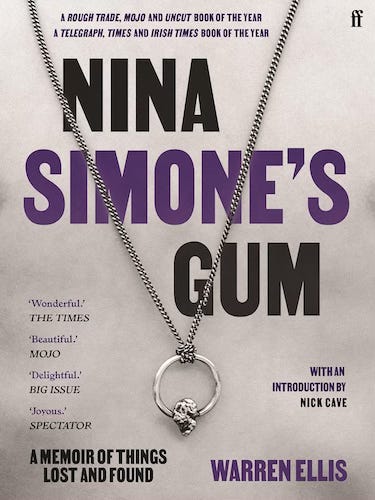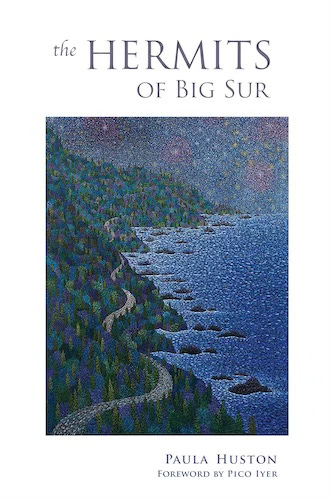[The Bookshelf #86] I Cheerfully Refuse
Leif Enger's defiantly joyful dystopian novel, plus Nina Simone's gum, and monks on the California coast
In the last edition of The Bookshelf, I mentioned that I was looking forward to reading Leif Enger’s new novel during our upcoming California vacation. Turns out, I couldn’t wait that long.
Nor could I wait to tell you about it.
What I’ve Read Recently
Of all the books I will eventually read over the course of 2024, I’m sure none will have a better title than Leif Enger’s novel I Cheerfully Refuse (Grove Atlantic). The cover art, for what that’s worth, is just about perfect too. But my goodness, everything inside is even better.
Enger says he sat down to write this book at the beginning of COVID lockdown—as good a time as any, I suppose, for a writer to dream up the dystopian landscape where Rainy and Lark, our narrator and his bookselling wife, make the best of bad times on the shores of Lake Superior. In his conversation with Jonathan Rogers on The Habit podcast, Enger recounts learning a while back that the bottom of Lake Superior has a temperature of 38° F, and that dead human bodies generate gasses and begin to rise when they hit 39° F. When it came time to inhabit a near-future dystopian mindset, he was fortunate enough to recall that macabre fact. “If you think of that, and you’re a novelist,” he says, “there’s something the matter with you if you don’t use it.”
The kind of dystopia that Enger imagines isn’t very far-fetched. There’s no nuclear annihilation, no pandemic, not even a suspension of the constitution (as far as we know). Instead, it seems the country has just sort of drifted—a situation in which temperatures have ticked up a degree or two, currencies have plummeted, literacy has all but fallen by the wayside, and sixteen elite families on the coasts own virtually everything. (If I ever have the good fortune of chatting with Enger, I’m going to ask him if El Salvador’s Fourteen Families provided the inspiration for that last detail.)
Despite all the apocalyptic stuff, Enger had fun writing this book, no doubt about that. Rainy’s narration is peppered with aphorisms, turns of phrase, and characters with names and backstories that delight and spark wonder.
At one point, his wife’s mildly subversive bookstore is targeted by a man who came from 400 miles away to toss a homemade bomb through the store’s window. This “young patriot” had previously, for reasons lost to memory, changed his name to Large Beef. Whatever life skills Large Beef possesses, bomb-making isn’t one of them. The bookstore bomb is “stuffed with red-dot gunpowder” but lacks a detonating mechanism. It’s a dud. “I was new to ironies and watched them pile up,” Rainy says. “If Large Beef could read he might’ve made a working bomb, but would a reading Beef want to?”
The bulk of the book takes place out on the water, in Rainy’s sailboat and other vessels that shall not, for now, be named. There’s a bassline that runs through the book—literally and figuratively—and a desperate search for a lost manuscript. And I suppose the obvious way to think of all this is in terms of an adventure story. But when I reflect on the ways the novel made me feel, I return first to the humane warmth of the characters, their defiant joy against all odds.
Which is to say, Enger is skilled at writing about quixotic voyages in sailboats. But he’s at his best when he inhabits the language of grief and longing, writing believably about the bonds of love and the tenacity of hope.
What I’m Reading Now
There’s a scene in the eminently strange film 20,000 Days on Earth where Nick Cave is having a conversation with Warren Ellis, his longtime musical collaborator. Ellis, for those unacquainted, is an enigmatic Gandalf-like figure, a multi-instrumentalist who creates sonic landscapes that defy description. (I dare you to listen to Ellis’ haunting vocals on the song “Bright Horses” without falling apart.)
In the conversation in the film, Cave asks Ellis, “Do you remember the Nina Simone gig?” The gig in question took place during the Meltdown Festival in London in the summer of 1999, an event curated by Cave himself. And of course Ellis remembers it.
He remembers it because he was starstruck. He remembers the limo ride. He remembers how frightened everyone was of her. He remembers what Nina Simone—Dr. Nina Simone, that is—was wearing (the top was white; it brought to mind a duvet cover). He remembers the way she waited in the wings, chewing gum and smoking a cigarette. He remembers the nervous energy in the room.
No one there ever thought they’d have this opportunity.
“That we were about to see her perform in 1999 was a miracle,” Ellis writes. “By the nineties her life seemed shrouded in hardship and turmoil. People knew that things were difficult for her [where she was living] in the South of France. There’d been reports that she’d fired a gun at her neighbours. There was obviously a lot of distress going on in her life. She was a very complex character. She was always explosive and outspoken, but now her career was winding down. She represented so much to so many, but her health was seriously deteriorating, both physically and mentally.”
On this night, following Cave’s introduction of her, Simone got out of her wheelchair and slowly made her way to the center of the stage. Ellis watched as she took the wad of gum from her mouth and stuck it on the piano, staring out into the darkness of the crowd. He remembers her apparent rage in that very first song, how she feebly walked to the edge of the stage and raised a fist. And how she then settled in to a set that somehow bordered on the joyous. He remembers hanging on her every word, her every painstaking note.
And Ellis remembers how, immediately after Simone finally stepped back into the shadows, he made his way through the crowd, up onto the stage, and found her gum, on the piano, sitting there wadded up on a discarded towel. He folded the towel and took it with him as a souvenir—a relic. In the years that followed, he rarely looked at it but always kept it close. Until recently, that is, when this piece of gum took on a life of its own.
Not all of this is in the Nick Cave film I mentioned at the outset. But it is in the first 50 pages of Nina Simone’s Gum: A Memoir of Things Lost and Found (Faber & Faber), which I’m reading now. It’s another book I intended to save for vacation. Again, I couldn’t help myself.
Reflecting back on that conversation captured in the film, Ellis writes, “Something shifted when others became aware of the gum’s existence. I thought about how many tiny secrets there must be out there in the universe waiting to be revealed. How many people have secret places with abandoned dreams, full of wonder.”
What I Might Read Next
As Katie and I make our way to California—in time for some early June Gloom, one hopes and prays—one book I have managed to save for vacation is Paula Huston’s The Hermits of Big Sur (Liturgical Press), about a Benedictine monastery on California’s rugged Central Coast. The book’s blurb describes this as “the compelling story of what unfolds within this small and idealistic community when medievalism must finally come to terms with modernism.”
As always, thanks for reading. I’d love to hear your thoughts on any of these reflections. And do let me know what you’re reading these days.
Tim







